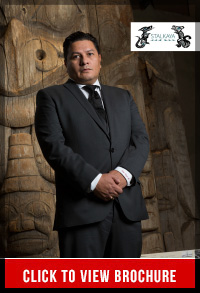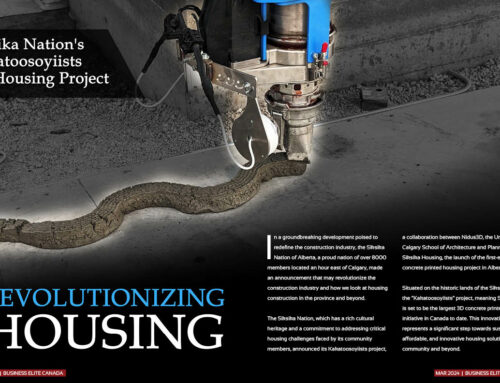A New Era of Partnerships with First Nations
By Anna Guy
 Ray Natraoro, President of Stalkaya Group, BC’s Squamish Nation-member owned construction company, has always been a visionary. contributing to his culture has always been an underlying theme in his life, even Before starting Stalkaya. Natraoro is behind some of the most acclaimed carvings in the country. You may not know it, but chances are, if you’ve been to British Columbia, you’ve felt his influence: His work is on permanent display in six art venues in British Columbia. Olympics for perm exhibition areas. While art will always be an important outlet for Natraoro, there was a calling to contribute to First Nations cultures in another way.
Ray Natraoro, President of Stalkaya Group, BC’s Squamish Nation-member owned construction company, has always been a visionary. contributing to his culture has always been an underlying theme in his life, even Before starting Stalkaya. Natraoro is behind some of the most acclaimed carvings in the country. You may not know it, but chances are, if you’ve been to British Columbia, you’ve felt his influence: His work is on permanent display in six art venues in British Columbia. Olympics for perm exhibition areas. While art will always be an important outlet for Natraoro, there was a calling to contribute to First Nations cultures in another way.
Extraordinarily self-driven, Natraoro worked 12-hour shifts in construction to put himself through certification programs in safety, and heavy equipment, graduating top of his class. Using his degree, Natraoro cut his teeth in civil engineering and mining projects over the west coast and Northern Canada. He quickly rose in the ranks, from instruction safety advisor, to safety representative for companies, and partner in a small safety company.
Increase in Engagement
During this time saw first hand the realities of engagement with First members nations and businesses. There was little to no room for improving or excelling in the company, says Natraoro, who started doing his own research, talking with other first nations with projects. The overall theme he identified was often First Nations are not proactive enough in the engagement process.
“It made me question how developing projects in our territory rarely have First Nations members involved in the contract and procurement side of things.”
Stalkaya Group was born to help solve this problem. Natraoro created Stalkaya to “improve industry standards through long-term partnerships that prove their approach to First Nations inclusion”.
“Initially, we formed different joint venture partnerships with multiple companies to develop a wider scope of services and skills, including environmental contracting, decommissioning, decontamination, demolition and hazardous materials abatement services through our multi-service partnership capabilities.” says Natraoro. “Through employment and training initiatives, we create career opportunities.”
Strategic partnerships with unions— IUPAT District Council 38 and Ironworkers Local 97, for example—has also increased skill training and opportunities for First Nations people and developing First Nations Territories. By bringing together innovative teams of professionals who specialize in all aspects of commercial and industrial construction, Stalkaya is centred on diversification and a disciplined approach to asset and risk management.
“Sharing our strengths for the best outcomes for all is our way,” says Natraoro. “We are making human capital investment in my community to be proactively engaged and ready for projects that are coming online, rather than playing catch up when they are starting,” says Natraoro. “If we Invest in the community, and invest in transferable skills, we will be more valuable to our nations, nations we work with, as well as improve and execute effective relations with private and public-sector companies.”
First Nations that need capacity building to engage in join venture opportunities also rely on Stalkaya’s expertise, who will provide services for these small First Nations who don’t have infrastructure framework.
The Four Pillars
Natraoro founded Stalkaya on a four pillar model that defines and tracks: employment and training, procurement, social investment, and fair profit sharing. “A lot of companies now look at the Truth and Reconciliation Commission with involvement of Aboriginal inclusion. Our whole initiative is bringing together group of companies that can provide services in multiple areas to invest in Aboriginal communities.”
Natraoro’s long term vision for Stalkaya, whose name means Striking Wolf, is to use its collective experience and become a full fledged general contractor company. Beyond that, Stalkaya will be emblematic of a new era of partnerships with First Nations communities and projects conducted on their territorial lands by creating economic development opportunities for First Nations organizations and corporate construction companies.
Natraoro says it starts at top level of management, which is what motivates him everyday to create more managerial positions for First Nations community members. “The management systems have huge implications in terms of communication and future prospects. In the past, First Nations have been underrepresented: this is something new.”






